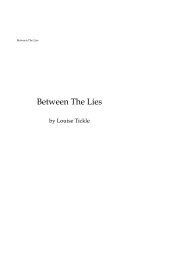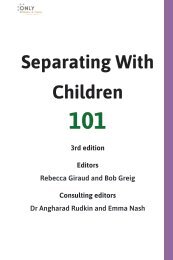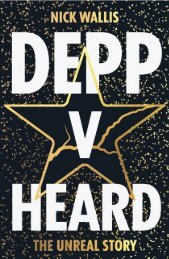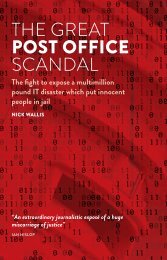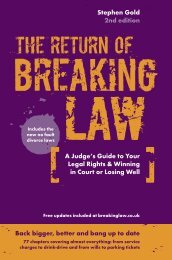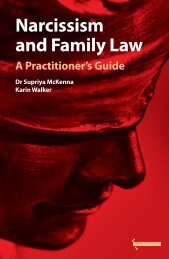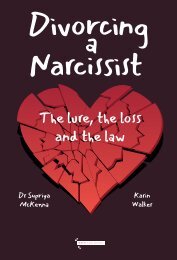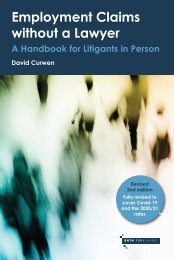Insolvency Made Clear: A Guide for Debtors
Plain English, practical guidance for anyone facing demands over a debt they are struggling to pay.
Plain English, practical guidance for anyone facing demands over a debt they are struggling to pay.
You also want an ePaper? Increase the reach of your titles
YUMPU automatically turns print PDFs into web optimized ePapers that Google loves.
Legal Terms Defined<br />
A ‘third party’ is a stranger to either a) a transaction or b) a legal claim. For an<br />
example of each: a) if a lender makes a loan with a debtor, the debtor’s spouse is<br />
a ‘third party’ to the loan; and b) if a creditor applies to make the debtor bankrupt,<br />
the debtor’s family are ‘third parties’ to the bankruptcy petition.<br />
The ‘Trustee in Bankruptcy’ or ‘Trustee’ is the <strong>Insolvency</strong> Practitioner who takes<br />
control over the bankrupt’s financial affairs. This will be the only way in which<br />
the word ‘Trustee’ is used in this book.<br />
A transaction at an ‘undervalue’ is one where the asset is transferred <strong>for</strong> less<br />
than it is worth: <strong>for</strong> example, if something of value is given away <strong>for</strong> free.<br />
An ‘undischarged bankrupt’ is someone whose bankruptcy is continuing; but a<br />
‘discharged bankrupt’ has completed the process.<br />
A ‘validation’ order is where the court gives permission <strong>for</strong> a transaction to take<br />
place. This is necessary if the transaction took place after the presentation of a<br />
bankruptcy or winding up petition.<br />
‘Vests’ refers to the transfer of ownership of property, e.g. if I sell a car, the car<br />
vests in the purchaser.<br />
The ‘winding up’ of a company is the same as its liquidation.<br />
A ‘without prejudice’ document is a confidential communication which tries to<br />
settle a dispute. Without prejudice communication is privileged: it cannot be<br />
shown to the judge.<br />
A ‘witness statement’ is a <strong>for</strong>mal written account of events. Witness statements<br />
typically contain an exhibit with documents as supporting evidence. It is the<br />
primary way in which someone gives the court in<strong>for</strong>mation.<br />
Symbols and acronyms<br />
Numbers in square brackets are usually paragraph references to a judgment.<br />
Legal cases have standard ways of being referred to (‘cited’). The most common,<br />
and the version this book uses where possible, is the ‘neutral citation’. An example<br />
is [2021] EWHC 222: this means that judgment was given in 2021, in<br />
the England and Wales High Court, and it was the 222 nd judgment that year.<br />
Sometimes the letters (Ch) appear afterwards: this refers to the ‘Chancery’ division<br />
of the High Court. Another example could be [2021] EWCA Civ 123 where<br />
EWCA refers to the England and Wales Court of Appeal and Civ means that it<br />
is a civil, as opposed to a criminal, case.<br />
xxvii



